
October 2014 |
 |
|


Worldwar1.com's
Centennial Projects
Besides boosting all the nation's projects to commemorate the Great War's Centennial, I've committed to a major project each year within my publishing group at Worldwar1.com. This year we have started a major update at our Doughboy Center site. Frankly, my travel programs in May and September have slowed this, but I still intend to have the project completed by the end of the year.
One thing, however, about spending a lot time on airliners is that you have a lot of time to think things over. I've concluded that a site complementing America's military effort is needed. The volunteers who served overseas, the supporters (and opponents) of the war effort at home, and the contributions of every state and community need to be recognized. As I envision its scope, this will be a two-year project to organize, design, gather material, and bring online. I'll include updates on this project in future issues of the Trip-Wire and our blog Roads to the Great War . Also, you will be having a chance to support our efforts.
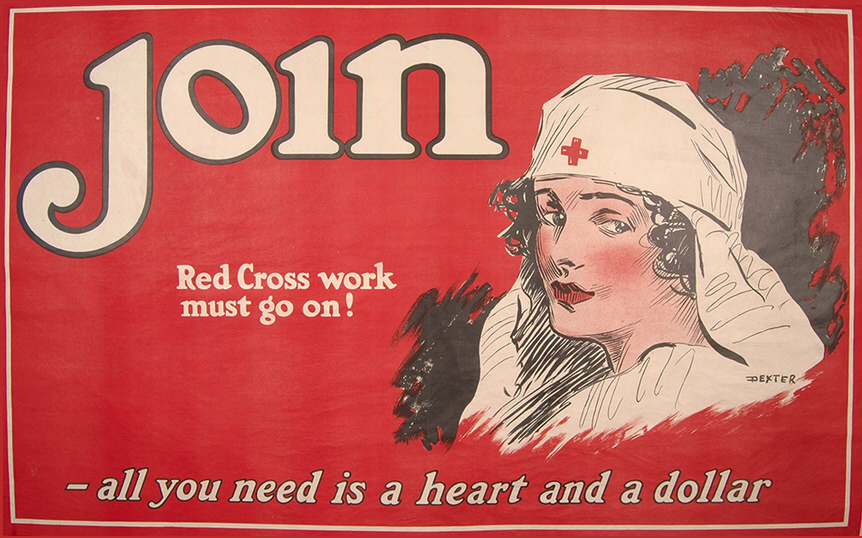
I will be speaking at the Cloverdale, CA, Centennial Remembrance on Tuesday evening 7 October 2014. My topic will be the War in 1917. Please come by and say hello if you are in the area. : (PDF Flyer) MH

|
2014
The Great War Begins, 1914-16
When: 17-18 October
Where: Soldier-Sailors Club, New York City
Sponsor: The New York Military Affairs Symposium (Details)
Over the Front Quarterly Meeting
When: 18 October
Where: Udvar-Hazy Center, Air and Space Museum, Dulles International Airport
Sponsor: Mid-Atlantic Chapter, League of WWI Aviation Historians (PDF Flyer)
Fall 2014 World War I History Symposium
When: 25 October, All-Day, Opens 0830
Where: Maryland War Memorial, Baltimore, MD
Sponsors: Western Front Association, East Coast Branch (Details)
2014 Symposium: 1914 - Global War and American Neutrality
When: 7-8 November
Where: National WWI Museum, Kansas City
Sponsors: National WWI Centennial Commission, WWI Museum, WFA-U.S. Branch, WWIHA (Details)
World War I Centennial Symposium
When: 14-15 November
Where: Norfolk, VA
Sponsor: MacArthur Memorial & Museum (Details)
2015
WWI: 100 Years of Impact
When: 6-7 Feb, 2015
Where: Tampa, FL
Sponsor: University of South Florida (PDF Flyer)
Local and Ongoing Events
The interest in the Great War generated by the Centennial commemorations has led to an explosion of local events and ongoing displays of art and artifacts from the war. We simply lack the space here to list them all. Fortunately, however, the staff of the Centennial Commission has taken on the job of providing a listing of all these presentations they hear about. We will make their current listing available here for downloading and revise the document as it becomes available to us. Click HERE to download the current listing.
|
|
 Recruits Needed for the
Bairnsfather Petition
Appeal for Official Recognition!
Bruce Bairnsfather's cartoons during the First World War were a major plank in the morale building efforts for the troops on the front line and of those at home. His drawings, based upon personal experience in the trenches, showed life as it really was, yet at the same time allowed everyone to laugh — at themselves, at authority, and at the enemy. His cartoons were avidly anticipated in the trenches and in most homes in Great Britain (which would also have owned examples of the many pottery items that carried his drawings).
The French, Italian, and American Forces, recognizing the effect of Bairnsfather's cartoons upon morale, asked for Bairnsfather to work his special magic on their troops too. Soon plays and films featuring his archetypal characters, Old Bill, Bert, and Alf were making people laugh literally all over the world and he was uniquely created "Officer Cartoonist."
Captain Bairnsfather, however, has never been officially recognized for his contributions. Sign the petition to make an appeal that this oversight be corrected as part of the Centennial commemorations:
Go Here Yanks Are Welcome!

Race to the Sea
One of the most misunderstood series of events in the 1914 campaign.
 At Wikipedia (Skip the Intro.)
At Wikipedia (Skip the Intro.)
 At History of War (Use as Portal to Articles about Subsidiary Battles and Key Commanders)
At History of War (Use as Portal to Articles about Subsidiary Battles and Key Commanders)
 Key Actions of Mid-October 1914
Key Actions of Mid-October 1914
 The Flooding of the Yser
The Flooding of the Yser
 First Battle of Ypres and the Origins of the Salient
First Battle of Ypres and the Origins of the Salient
 31 October 1914: The Western Front's Last Piece Falls into Place
31 October 1914: The Western Front's Last Piece Falls into Place

A Forgotten Figure of the Great War
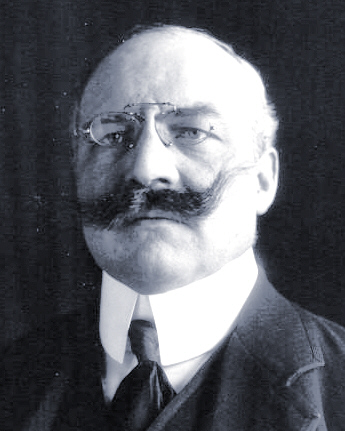
Adolph Messimy (1869-1935) made his mark in both the political and military spheres of France during the war. At the start of the war he held the position of Minister for War for the second time in the administration of René Viviani. He had worked his way to the top as a professional politician after retiring from the army in 1899. Messimy, however, received some of the blame for the failure of Plan XVII and resigned before the month of August 1914 had ended. His had been one of the authorizing signatures on France's mobilization order.
He rejoined the army as a reserve captain and proceeded to serve with distinction in the Vosges sector where he was wounded. A colonel by 1916, he was again wounded at the Somme. His rise in grade continued throughout the war and he ended his military career as a general and divisional commander. Afterward he returned to his political career with mixed success.
[In case you're wondering: yes, the editor did think General Messimy's image was a perfect Gallic match for General Ludendorff.]

Britain's New Army
I have no complaint whatever to make about the response to my appeals for men — and I may mention that the progress in training of those who have already enlisted is most remarkable — the country may well be proud of them. But I shall want more men, and still more, until the enemy is crushed.
Lord Kitchener at the Guildhall Banquet, November 1914
|

|

U.S. Centennial Organizations & Resources
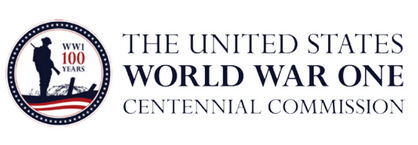
worldwar-1centennial.org/
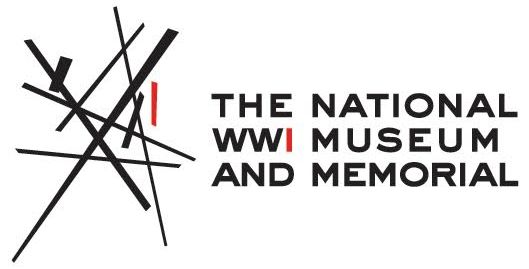
theworldwar.org/
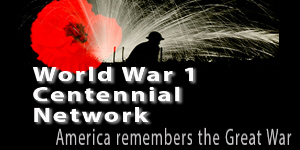
www.ww1-centennial.org/

history.army.mil/
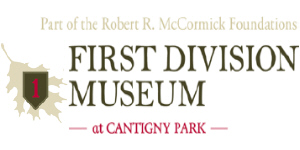
www.firstdivisionmuseum.org/

www.abmc.gov/
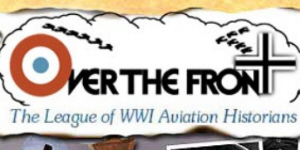
www.overthefront.com/

www.nationalmuseum.af.mil/
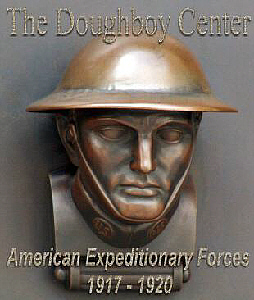
www.worldwar1.com/dbc/
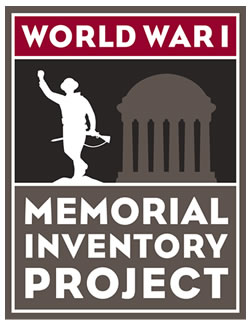
wwi-inventory.org/
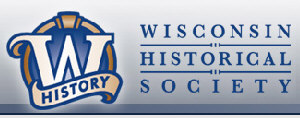
wisconsinhistory.org/
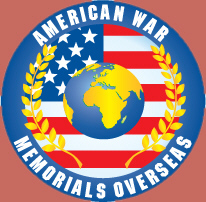
www.uswarmemorials.org/
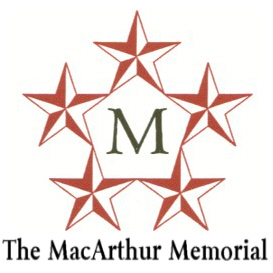
www.macarthurmemorial.org/

www.saving-hallowed-ground.org/
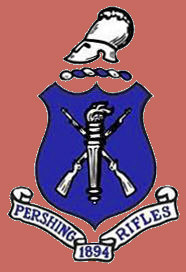
www.theprgroup.org/
|
News from the American Battle Monuments Commission
The American Battle Monuments Commission (ABMC) continues to support the Centennial Commemoration. In September, the Commission appointed the U.S. Centennial Commission Chairman Rob Dalessandro to a key post at their headquarters. From their announcement of the appointment:
With more than three decades as a public servant, Rob Dalessandro brings his experience and knowledge to the American Battle Monuments Commission as the new deputy secretary for Headquarters Operations. As a retired Army officer, former chief of the U.S. Army Center of Military History, and chairman of the U.S. World War I Centennial Commission, Dalessandro's years of commitment to the federal government will contribute a wealth of expertise to the agency.
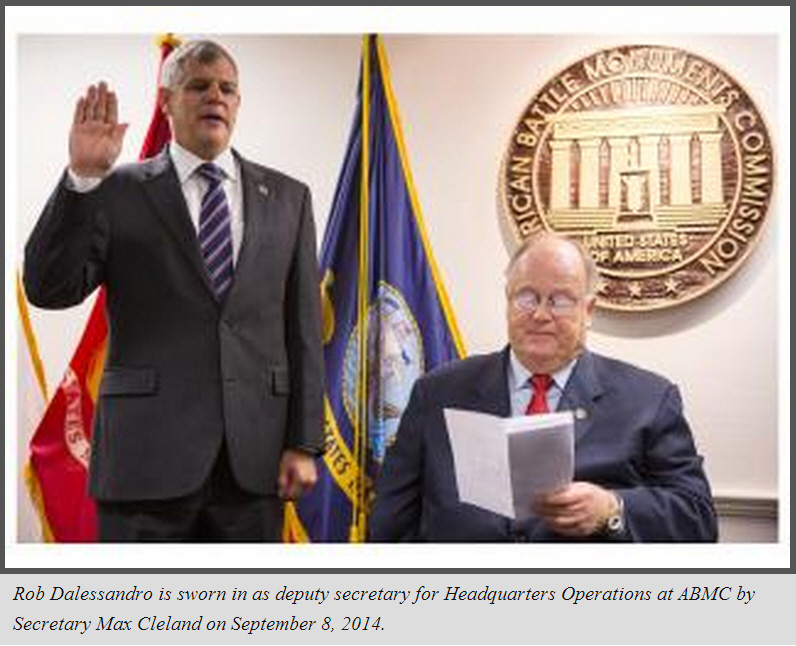
"Rob knows the ground truth about war, military history, and serving our country, and I'm certain that his experiences will bring to the ABMC a renewed understanding of our commitment to tell the story of those Americans that gave the last full measure of devotion," said ABMC Secretary Max Cleland.
Rob Dalessandro is editor of the Army Officer's Guide, and coauthor of Organization and Insignia of the American Expeditionary Force, 1917-1923; Willing Patriots: Men of Color in the First World War; American Lions: The 332nd Infantry Regiment in Italy in World War I; and The Great War.
"History tells us that the men and women who suffered for our freedoms did so without knowing us," added Dalessandro. "It's this link, this thread of our American values, that attaches us to those people in perpetuity. And it's our responsibility here at the ABMC to ensure this link continues to be passed on to future generations."
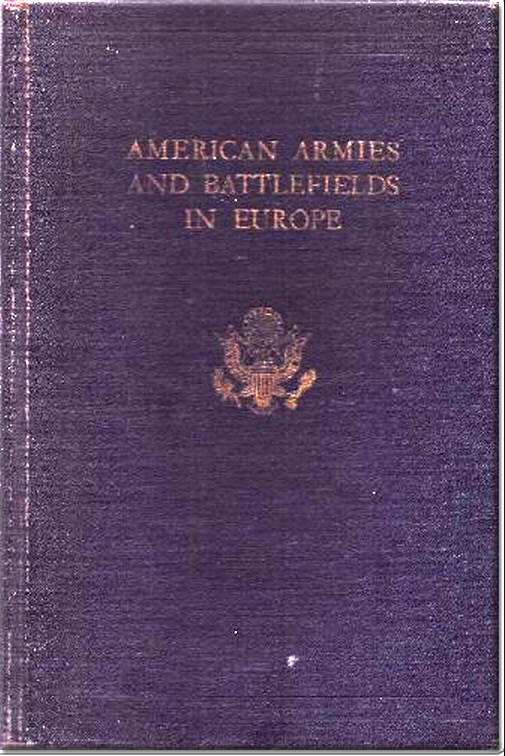
Original 1938 Volume |
An Essential Resource Now Available for Downloading
American Armies and Battlefields in Europe: A History, Guide and Reference Book is a "must have" for anyone interested in the American participation in the war. Now available for downloading either in whole or by sections, the 1938 updated version includes contributions by notable army officers such as Maj. Dwight D. Eisenhower who was assigned to ABMC in the 1920s.
The document has been converted to a .pdf document, is fully searchable and free. Visit ABMC's website at:
http://www.abmc.gov/news-events/news/world-war-i-historic-reference-book-now-available-abmcgov#.VCR
WWI Preservation Projects
Lafayette Escadrille Memorial Restoration Project:
Visiting the Site
The very first stop on my latest WWI battlefield tour was the Lafayette Escadrille Memorial outside of Paris. As regular readers know, we are strong supporters of the effort to restore the memorial. Here are a few images from our recent visit. Download the brochure below for information on how you can help the effort to renovate this wonderful national treasure for both France and the United States.

Even from a Distance the Wear on the Monument is Evident

Details: American Eagle Stain Glass in the Crypt; Squadron Insignia in Mosaic; Remains of Major Raoul Lufbery of the Escadrille and U.S. 94th Aero Sq.
Click to Download the Brochure
WWI Preservation —
Making the Case
Another worthy restoration project we are supporting is Mark Levitch's World War I Memorial Inventory Project. In this recent article, he reminds us of why it is important that we protect and nurture our heritage from the Great War.
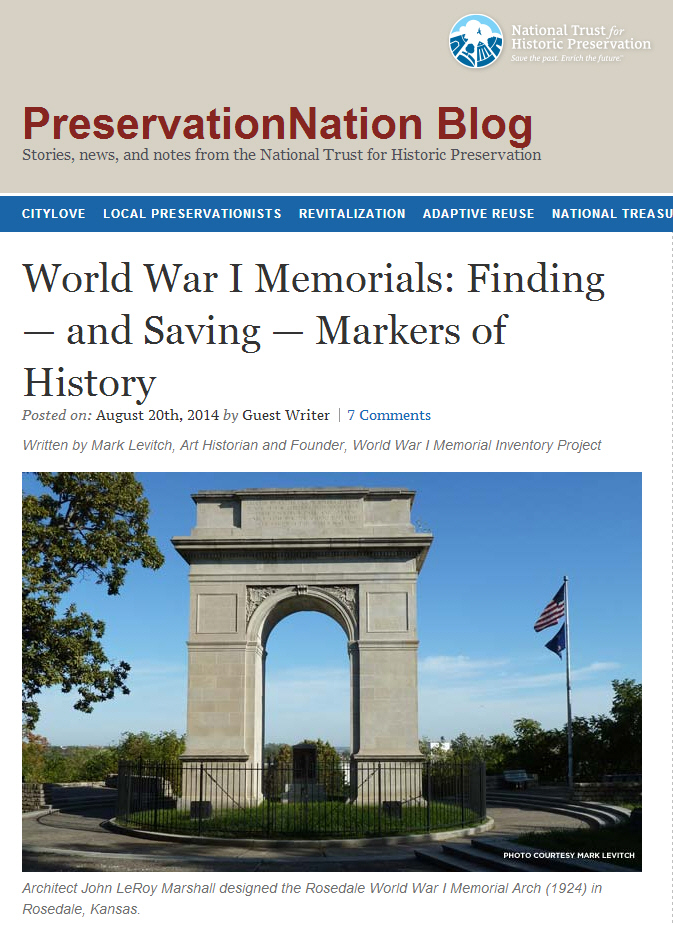 Read Mark's Entire Article Here
Read Mark's Entire Article Here
The Centennial Commission Calls for Volunteers!
The United States World War One Centennial Commission is a volunteer-based organization that receives no taxpayer funding and relies on private donations. We depend on our volunteers to help us achieve our mission to Honor, Educate, and Commemorate during the Centennial of World War One.
Enlist Here:
worldwar-1centennial.org/index.php/help-us/volunteer-opportunities.html
|
New Centennial Projects and Resources
Notice above that we have added two new logos and links for projects dedicated to protecting our nation's heritage and future during the Centennial.
Saving Hallowed Ground
Saving Hallowed Ground is a worldwide organization dedicated to the preservation and protection of monuments and markers, commemorating America's veterans and patriots wherever they may be found.
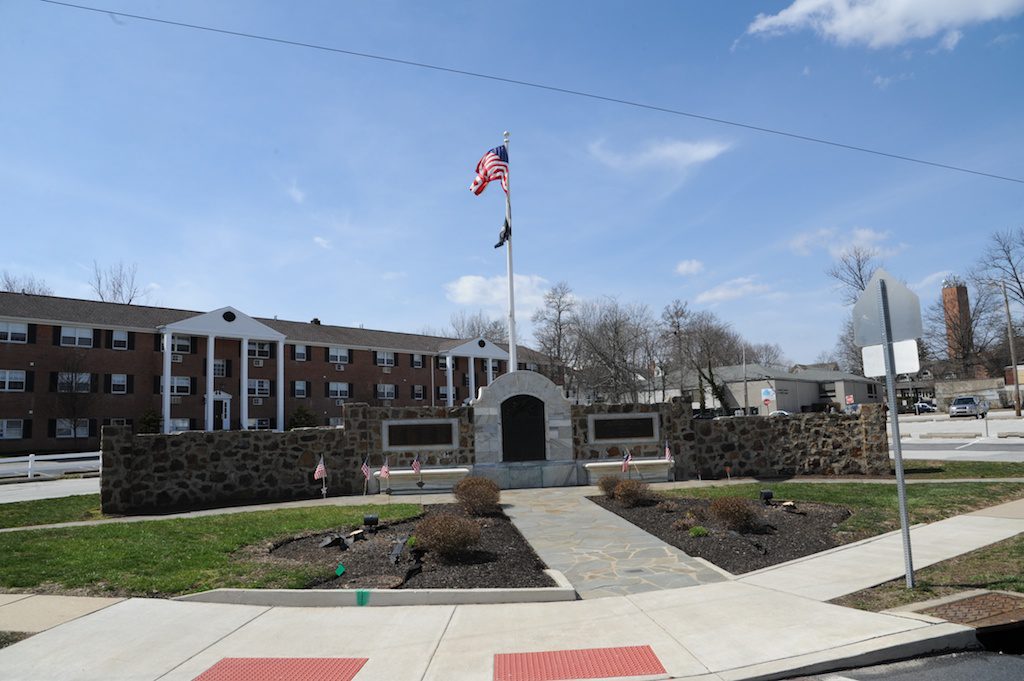
Saving Hallowed Ground Supported the Restoration of the 1922 Radnor War Memorial Located in Wayne, PA
Founder and Preservation Specialist Eugene Hough was asked to describe how SHG will be operating and making contact with the public, especially young people:
We will establish points of contact with community schools in both urban and rural communities and facilitate educational outreach to guide student teams in researching and reporting on veterans' names commemorated on the local monuments. Students will be invited to participate in guided hands-on conservation clinics on the monuments themselves, thus promoting stewardship of these important sites into the future. As you are aware, there are thousands of monuments, markers and plaques dedicated to our citizens and veterans who served and supported the Great War effort.
Please visit our website at http://www.saving-hallowed-ground.org/ if you would like to participate in or contribute to our project.
The Pershing Rifles
Another group, the Pershing Rifles, has come to the forefront of the Centennial commemoration. Here is a statement about their plans and level of commitment.
The national World War I Centennial Commission now has a direct link to the distinguished military heritage of General of the Armies John J. Pershing, Commander-in-Chief of the American Expeditionary Force (AEF) during the Great War, with the affiliation of The Pershing Rifles Group, Inc., as an official Commemoration Partner.

A Pershing Rifles Color Guard
|
The Pershing Rifles Group is the organizational parent of the National Society of Pershing Rifles, which traces its origin to 1894, when 2nd Lt. John J. Pershing, then a military instructor at the University of Nebraska, organized an elite group of cadets to, among other things, "promote the highest ideals of the military profession," especially through excellence in drill and ceremonies. The original group eventually became The Pershing Rifles, named by the cadets in honor of their drillmaster when he left the university in 1895.
Over the years, the organization expanded from its Nebraska roots to become the premier national military fraternal organization for ROTC cadets, carrying on the Pershing tradition for some 120 years. General Pershing retained a deep and abiding interest in the Society throughout his life, an interest carried on to this day by Mrs. Sandra Pershing, a granddaughter-in-law, who serves as both an honorary director of the present-day Pershing Rifles Group and an honorary member of the World War One Centennial Commission.
Pershing Rifles alumni have exemplified Pershing’s "highest ideals" in the service of the nation, serving with valor and distinction in every armed conflict since the Spanish American War and producing countless general and flag officers, political leaders, and cultural figures, including luminaries like General Colin Powell (City College of New York) and actor James Earl Jones (University of Michigan). Alumni ranks also include many who made the supreme sacrifice, including World War II Medal of Honor recipient Marine Corps Major Kenneth D. Bailey (University of Illinois).
The Pershing Rifles are prepared to support World War I-related ceremonies and observances, to the extent that cadet resources are available, by providing highly trained color guards, honor guards, drill teams, and military escorts. Active Pershing Rifles members are drawn from Army and Air Force ROTC cadets, and Naval ROTC midshipmen at some 50 universities, who collectively carry on the Pershing legacy. Requests for Pershing Rifles ceremonial support may be made through the Pershing Rifles Group web page at www.theprgroup.org.
The Pershing Rifles Group is a non-profit organization that promotes leadership, scholarship, and military excellence among the young men and women who comprise the present-day National Society. It also coordinates the Pershing Rifles Alumni Association and supports the National Society of Black Jacks, which promotes leadership and patriotism in the Pershing tradition at the secondary school level.
Finally, the Pershing Rifles Group administers the Pershing Rifles Foundation, which provides a tax-exempt medium through which benefactors can contribute financially to help the Pershing Rifles organization carry on the Pershing legacy. The foundation provides academic scholarships to deserving members, assistance to local Pershing Rifles and Black Jacks units, and defrays expenses associated with major cadet-oriented activities, such as the annual Pershing Rifles National Convention and Alumni Reunion, and the John J. Pershing National Drill Meet, both of which will be held next March, in Richmond, VA.
Let Us Help Publicize Your Local WWI Events & Research!
(Email the Editor)
|
|

October 1914:
German Intellectuals Make Their Nation's Case
Manifesto
As representatives of German Science and Art, we hereby protest to the civilized world against the lies and calumnies with which our enemies are endeavoring to stain the honor of Germany in her hard struggle for existence — in a struggle that has been forced on her.
The iron mouth of events has proved the untruth of the fictitious German defeats; consequently misrepresentation and calumny are all the more eagerly at work. As heralds of truth we raise our voices against these.
It is not true that Germany is guilty of having caused this war. Neither the people, the Government, nor the "Kaiser" wanted war. . . .
It is not true that we trespassed in neutral Belgium. It has been proved that France and England had resolved on such a trespass, and it has likewise been proved that Belgium had agreed to their doing so. It would have been suicide on our part not to have been beforehand.
It is not true that the life and property of a single Belgian citizen was injured by our soldiers without the bitterest defense having made it necessary. . . .
Intellectuals are
Still Arguing
About the War
|
|
It is not true that our troops treated Louvain brutally. Furious inhabitants having treacherously fallen upon them in their quarters, our troops with aching hearts were obliged to fire a part of the town, as punishment. The greatest part of Louvain has been preserved. . . .
It is not true that our warfare pays no respects to international laws. It knows no undisciplined cruelty. But in the east, the earth is saturated with the blood of women and children unmercifully butchered by the wild Russian troops, and in the west, dumdum bullets mutilate the breasts of our soldiers....
It is not true that the combat against our so-called militarism is not a combat against our civilization, as our enemies hypocritically pretend it is. Were it not for German militarism, German civilization would long since have been extirpated. . . .
We cannot wrest the poisonous weapon -- the lie -- out of the hands of our enemies. All we can do is proclaim to all the world, that our enemies are giving false witness against us....
Have faith in us! Believe that we shall carry on this war to the end as a civilized nation, to whom the legacy of a Goethe, a Beethoven, and a Kant, is just as sacred as its own hearths and homes.
93 Signatories listed, some of the best known internationally were Max Planck, Wilhelm Roentgen and Fritz Haber.
Source: The World War I Document Archive
|
|

We Are Now Accepting Bookings for Our 2015 Centennial Tours:
Gallipoli and the Dardanelles Tour
Our 100th Anniversary of Gallipoli Tour to be conducted in collaboration with Mat McLachlan Battlefield Tours of Australia is now full. We are, however, accepting waiting list requests, which require a deposit that is fully refundable.
Western Front Tours — Full Combined Brochure Now Available
2-10 May 2015: I will lead this tour and cover the 1914 and 1915 Battles North of Paris, including the Aisne & the Race to the Sea, the Siege of Antwerp, the First and Second Battles of Ypres, the Christmas Truce, and the French and British Battles in Artois. Deposits received by 2 November will result in a 5% reduction in the tour costs. Full payment by that date will result in a 10% discount.
15-23 August 2015: My summer centennial expedition will cover the Western Front Battles of 1914 and 1915 East of Paris in the Chemin des Dames, Champagne, Argonne, and St. Mihiel sectors, PLUS the American Battlefields of 1918 at Château-Thierry, Blanc Mont, St. Mihiel, and the Meuse-Argonne. Deposits received by 15 February 2015 will result in a 5% reduction in the tour costs. Full payment by that date will result in a 10% discount.

Click on Image to Send Email
|
|
|

|

Worldwar1.com's Literary Editor David Beer Recommends
Three Outstanding Forgotten Great War Poets and an Important Anthology
|

Henri Gouraud at Gallipoli
|
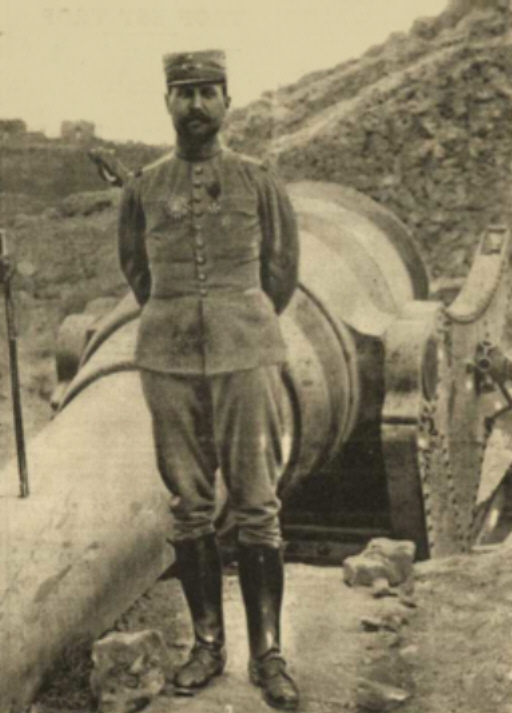
Gouraud with Captured Turkish Artillery
|
Henri Gouraud (1867-1946) was one of the most honored French generals of the Great War but is mostly remembered for the campaign of 1918. He had begun, however, to demonstrate his capabilities earlier in a forgotten element of the Gallipoli operation. After commanding a division in the Argonne in 1914, in May 1915 Gouraud was sent to Gallipoli — where early French efforts had been highly criticized — to assume command. Charged with anchoring the right side during the effort to break out of the Cape Helles beachhead, the French colonial troops had not fared well in their attempts to seize the high ground, consistently leaving the British troops on their left exposed, ultimately preventing any advance. Gouraud arrived in May, but on 4 June saw his troops again fail.
He proceeded to galvanize the French contingent, starting with a meticulously planned operation to capture a trench section the Turks had reinforced with two redoubts. By using artillery to greater effect, he eased the burden on his infantry. The operation went as planned for the French troops, but once again, his colonial troops had problems. Gouraud, however, would simply not accept failure; he insisted on a final push by the Regiment de Marche d'Afrique. The second line of trenches was captured and the Allied line was advanced. In this successful attack, his forces suffered 2,500 casualties but inflicted over 6,000 on their Turkish adversaries. The French deployment at Gallipoli had finally begun to be a positive asset for the Allies, but this would not last long.
On 30 June 1915, Gouraud became one of the highest ranking officers of the war to be wounded. He lost an arm and broke both legs as a result of being hit with numerous fragments from the explosion of an artillery shell. The effectiveness of the French forces around Cape Helles diminished noticeably after his evacuation when he was replaced by a general of lesser caliber.
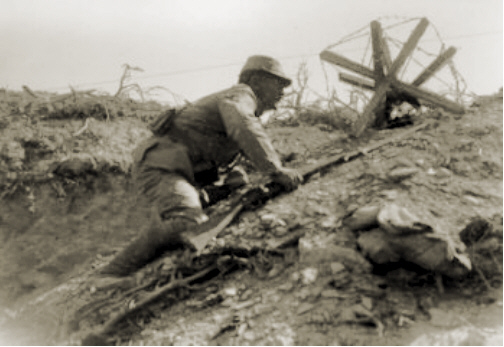
French Soldier at Gallipoli
15,000 French and Colonials Killed Are Buried at Cape Helles
Later in the year he was given command of Fourth Army in the Champagne but was rotated to Morocco soon afterward. Gouraud returned to the Western Front, though, to command Fourth Army in time to defeat the last of the German offensives east of Reims in July 1918. Just before the Armistice he was given the honor of retaking Sedan for the Allies. His remains are interred today in the monument at Navarin Farm in the Champagne. The monument honors the French sacrifices in the sector throughout the war as well as the American troops that fought under his command in 1918.
|
|
|

Air Reconnaissance at the Marne
|
Aerial reconnaissance played a significant role 100 years ago in the unfolding of the First Battle of the Marne. Louis C. Breguet of the famous watch-making family, who was also a budding aircraft designer, had himself assigned as an enlisted pilot. Flying a Breguet AG-4 of his own design and manufacture on 2 September 1914, he spotted the German forces changing direction, moving from west to east rather than trying to circle around Paris. He informed his headquarters of it. Getting the generals to act on this information was a tougher task, however.
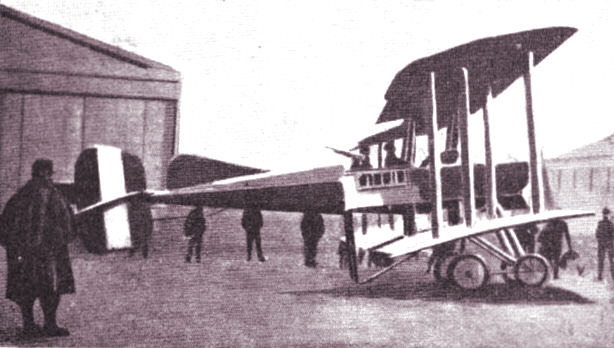 An AG-4 of the Type Used by Breuget in His Mission
The next day the Royal Flying Corps substantiated Breguet with its own report that "disclos[ed] the movements of all the Corps of the I German Army diagonally South East across the map toward the Marne." Alarmed by these reports and the lack of response from senior officers, Capitaine Georges Bellenger, commander of the air unit supporting the Sixth Army being formed in Paris, appealed to General Gallieni, commander of the Paris District. Won over, Gallieni then made the case to supreme commander Joffre that the Germans were exposing their flank to an attack out of Paris.
The net result of this collaborative effort was that over a period of three days the Germans marched into a salient with the French 5th Army on their left flank, the French 6th Army on their right flank, and the British Expeditionary Force standing firm at the bottom of the pocket.
Sources: Walter J. Boyne, "The Influence of Airpower on the Marne," Air Force Magazine, July 2011; Shooting the Front, Terrence Finnegan, 2006.
|
|
|
Thanks to each and every one of you who has contributed material for this issue. Until our next issue, your editor, Mike Hanlon. |
|
 (Or send it to a friend)
(Or send it to a friend)
|
Design by Shannon Niel
Content © Michael E. Hanlon
|
|
|



























